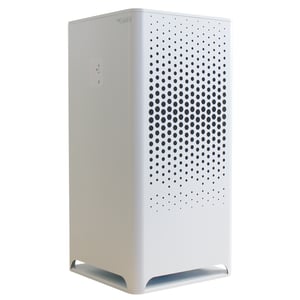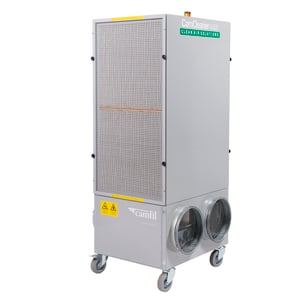
In cold winter months, our energy and heat need to increase drastically as the temperature drops outside. The sudden temperature change can lead to an increase in pollution levels in the outdoor air due to several factors. In addition, the cold itself means that we spend even more time indoors, which brings us closer in small proximity. Many still don't understand how it affects us and our indoor environment.
There is a parallel relationship between outdoor and indoor air as the more polluted the air is outdoors, the worse is the indoor environment. In the best-case scenario, your home or business must have a proper ventilation system with correct air filters to fight the bad indoor air quality and keep the harmful pathogens at bay. Air filtration solutions ensure good indoor air quality that adds new fresh, clean and purified air. In Nordic countries, the most common filter class for the supply air filters is ePM1 60% (revised from the old F7). This filter class successfully removes over half of the most harmful and dangerous particles known as PM1 (Particulate Matter 1). It is often possible to upgrade to higher-class filters, which can significantly reduce particle levels. In general, the standards for indoor air quality have been raised in the past few years and many of our customers are aware and demand a higher filter class. Also, the international ISO standard 16890 is a great tool for choosing the right filter class.
HEALTH PROBLEMS: Our health and immune system are extensively affected by the quality of indoor air. The cleaner air we breathe, the better conditions we give our bodies that fight against viruses and infections. There are many studies that show that areas with high levels of air pollutants increase the risk of infection. During the winter, we generally spend more time indoors and are often closer to each other. Nowadays, as many people understand, the risk of infection increases significantly with a reduced distance between us. This means that the quality of the indoor air is a necessity.
In winters, there are more of the smallest particles, PM1, in the air. This is because most particles of that size come from combustion, such as exhaust fumes from traffic and emissions from heating plants. PM1 particles are the particles that pose the greatest health risk as the human body has no natural defence against them, the smaller the particles the greater the risk. These particles can pass into the bloodstream and reach critical organs. The pollution levels differ depending on your surrounding environment, ie where the property is located. For example, metropolitan environments and some industrial areas are often more vulnerable than others. However, air pollutants can be transported long distances in the air, for example, the volcanic eruption in Iceland in 2010 was the reason why air traffic was halted in many places throughout the world. In a similar way, we spread viruses and bacteria in the distance when we cough or sneeze. These pathogens can float around in the air for several hours and increase the risk of us inhaling them and getting sick. Humidity also plays an important role in this case and affects both the spread of the particles and our susceptibility to infection as our mucous membranes are greatly affected by the moisture content. The moisture also affects the weight of the particles, which determines how long the particles float in the air. Simply put, the drier the air, the longer the particles will float.




Sources:
European Public Health Alliance, “Coronavirus threat greater for polluted cities”, 2020 (downloaded November 2021)
Scientific reports ” Long-distance airborne dispersal of SARS-CoV-2 in COVID-19 wards”, 2020, (hämtad November 2021)
Jakob Löndahl, Docent i Aerosolteknologi vid Lunds Universitet, Camfils Webbinar 24 November, 2020
Ensure clean, allergen and pathogen free air in the indoor environment using the proper air filtration



